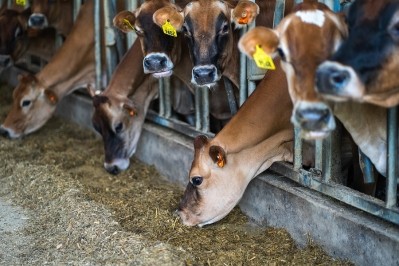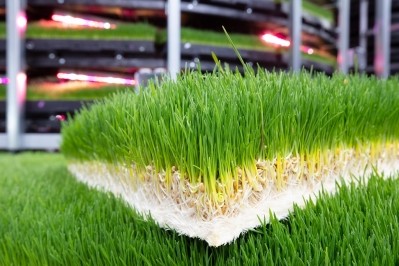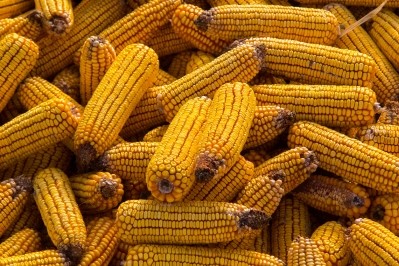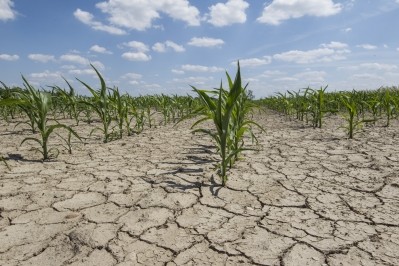Drought pushes US dairy to hydroponics for indoor feed production
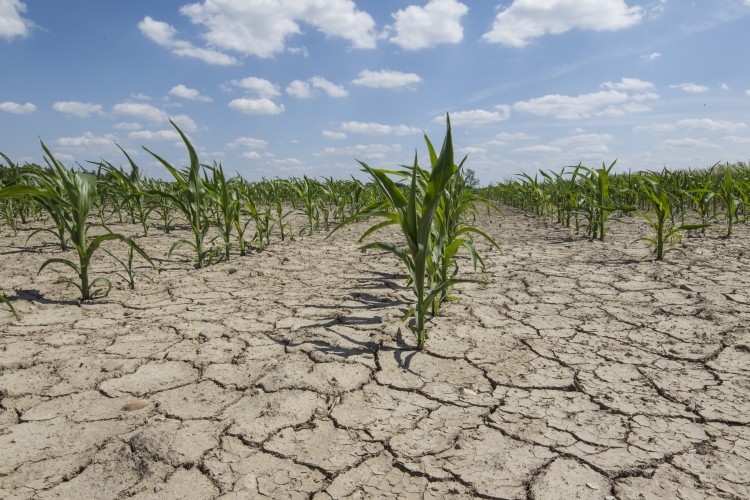
The dairy started growing its barley sprout feed inside in about 2013 and has been expanding production since that point, said owner Mario Daccarett. He was also interested in the potential to increase levels of CLA (conjugated linoleic acid) in the milk produced by continually using fresh feed.
Parts of California had multiple years of dry weather and drought conditions, he told us. The indoor feed growing system allows for water to be used more efficiently.
Using the hydroponic system, the farm is able to reduce the amount of water needed for feed growth, he said. “That system helps us produce the feed with about 2% of the water normally needed outdoors,” he added.
Currently, the dairy uses a blended ration with oat hay raised on site and the daily harvested, hydroponic barley sprouts, he said. Before switching to the barley spouts, the dairy used alfalfa in the diets.
Production details
The setup starts with barley seeds added to a series of trays, said Daccarett, it is allowed to grow for six days and then harvested for feed.
“It’s barley seed with a high germination rate, and it’s just pure seed with no insecticides or pesticides,” he said. “Planting is seed and water, we don’t need anything else.”
The farm averages about 6,200lbs a day of cut barley spouts, he said. “We plant every day and every day we harvest, so it’s a continuous process it’s planting and harvesting every day of the year,” he added.
The entire process to harvest the day’s production, clean trays and refill them for new growth takes several hours, he said. But it is a relatively simple and non-strenuous process.
To produce their feed, the farm uses multiple units containing the hydroponic trays, he said. They started the indoor growing project in 2013 with one unit, and added their fourth this year.
Cattle adaptations
Although the dairy and cheese producer has focused on feed production to meet the needs of sheep, the system is one that could be adapted for use with dairy cows, said Daccarett.
Ten sheep eat about as much as one dairy cow, he said. Currently the farm’s hydroponic system could support a herd of about 200 cows.
“It’s definitely possible,” he said. “They’re developing some automatic systems where there’s no labor, it is planted automatically and then you harvest by pushing a switch – it allows you feed more like for cows.”
The hydroponic system the farm uses are commercially available, said Daccarett, but the system is new and continuing to be improved. “It’s getting to be more feasible to feed a larger number of animals,” he added.
“The technology is there,” he said. “Once the technology is getting better and bigger, it will be more feasible for cow operations to use this kind of systems.”
Diet changes
Moving production of their feed inside did allow for some cost savings, said Daccarett. The barley sprouts replaced use of alfalfa hay, which was an expensive feed ingredient.
The sheep also appear to be more satiated after feeding times, he said. “With the barley spouts they are calmer,” he added.
The swap also has made the animals more efficient, he said. Less dry matter is needed for their diets, while yield has improved.
“The feed is so digestible that you have less manure, which is good,” said Daccarett. “We can get more out of the feed in the milk, rather than it being excreted by the animal.”
Even a small decline in manure production can be a significant change by the end of a year, he said. “It does present that kind of advantage just being able to utilize [the feed] more efficiently,” he added.
Quality control
When the farm was considering the change to producing its feed inside, it also was looking at finding feed ingredients to mimic what was used for dairies that produced award-wining cheeses in Europe, said Daccarett. But some of those feed ingredients needed specific conditions.
“We found the only way we could replicate something close to it was to grow the grass in a controlled environment,” he said. “We get the health advantage and the flavor advantage that will help us to make a great quality cheese – that’s the closest we can get to that kind of grass, with temperature control and humidity control.”
The spouted barley raised indoors is paired with a more traditionally raised oat hay, he said. The farm grows its own hay every year during the rainy season.
“Next month we’re planting oats and let it grow and cut it and bale it in April and we keep that for the rest of the year,” he said. “We don’t use any irrigation at all we just rely on the rain to produce the oats.”
